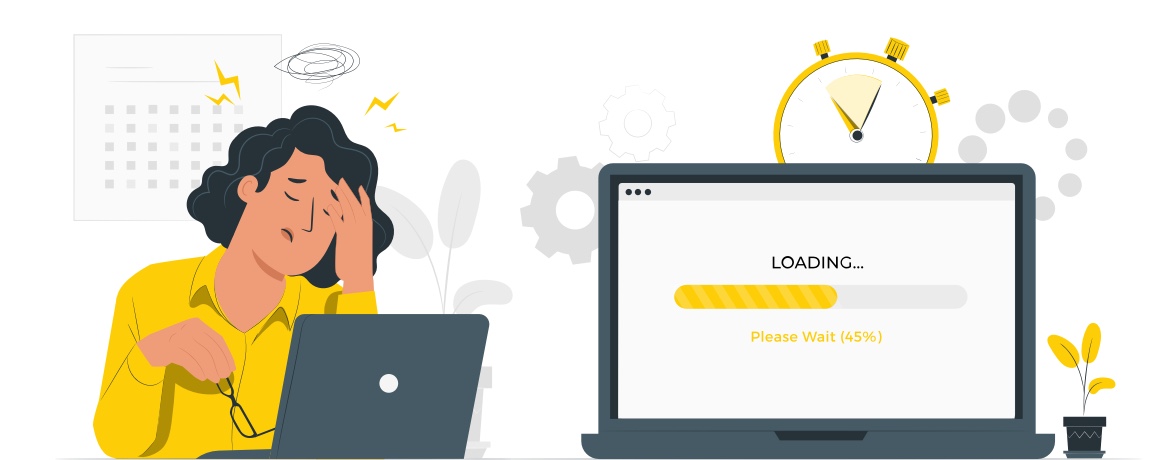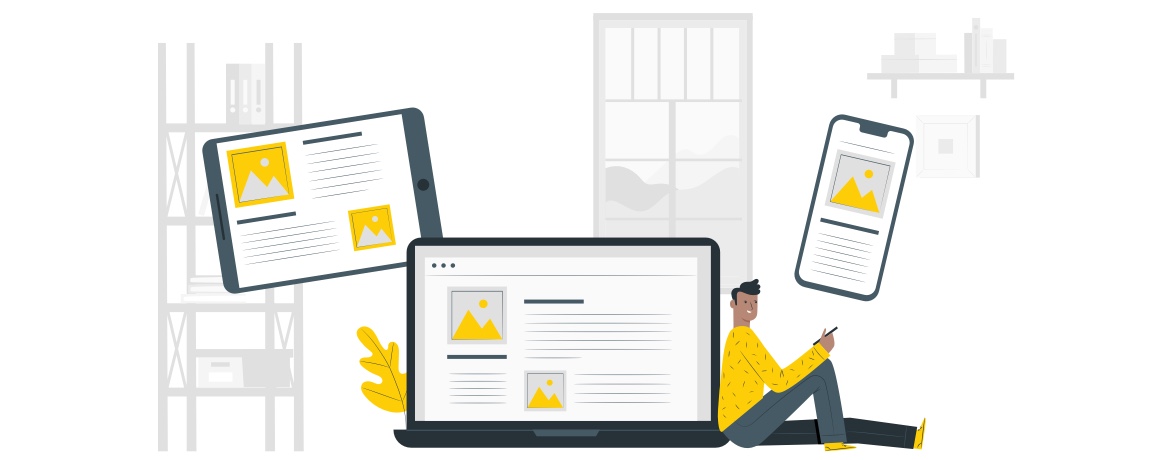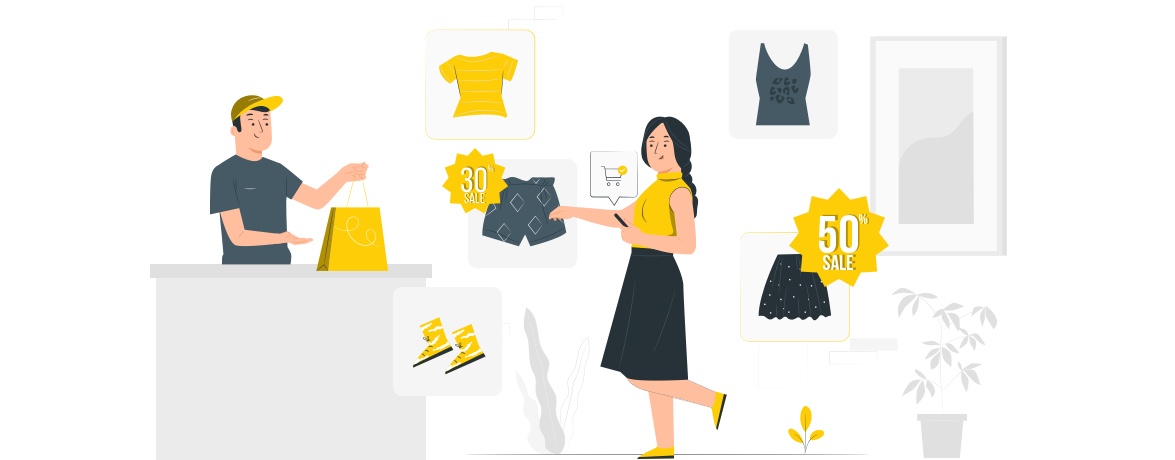08 Dec 22
19 eCommerce Statistics & Trends For 2023 You Need To Know [UPDATED]
After an unprecedented couple of years, the landscape of eCommerce statistics have been extremely interesting to follow. Changes that were once on the horizon have shifted forwards catalysed by the impacts of the global coronavirus pandemic. In fact, as a direct result of COVID-19 and the lockdown restrictions, about a quarter of brick-and-mortar stores launched ecommerce stores, from a survey of nearly 200 retailers. (Source : Software Advice)
It has been roughly estimated that around 95% of all purchases will be via eCommerce by 2040. (Source : Nasdaq) So if you have not already planned your future business goals to include digital, when will you? Of course it can be scary to navigate, with so many avenues pulling at your pocket strings. The safe thing to do is to look at data and numbers to help you make informed strategic decisions. We can learn from other business’ failures and successes to make our own moves.
Here are some of the latest findings in the world of eCommerce that will help your business, whether you’re making the leap, or simply trying to secure your footing in this competitive space.
General Industry eCommerce Statistics
The retail eCommerce industry is forecast to grow by 90% over 5 years.
The eCommerce industry made 3.354 trillion dollars in 2019. This figure is projected to jump to 6.388 trillion dollars in 2024 (Source: eMarketer).
There Are 2.14 Billion Online Shoppers Worldwide
(Source : Statista)
With the Covid19 pandemic (Source : TechCrunch), more consumers are going online to buy everything from groceries to luxury items.
Consumers are most likely to trust a business that makes it easy to contact people at the company.
(Source : Oberlo)
On average, only 1.94 percent of ecommerce website visits convert into a purchase.
(Source : Oberlo)
Roughly speaking, this means that only one in 51 website visitors actually buys something. Users need to be persuaded again via various methods of social proof, logic and credibility before making a decision and choosing one brand over the others.
The month of April alone, saw more than 200,000+ brand new Australian online shoppers
(Source : Jani)
The impacts of COVID-19 has created a lot of new habits in our community, exemplified by a lot of newfound traffic online from older generations, and those who normally prefer shopping in-store. Faced with lockdown restrictions for months on end and the physical closure of many brick-and-mortar stores, people are fast becoming more comfortable with shopping online.
Most small business owners work between 40 and 49 hours per week.
(Source : Semrush)
Audience Demographics & Habits
Millennials and Gen Xers are the biggest online shoppers
(Source : Kinsta)
According to Kinsta eCommerce website statistics, 67% of millennials and 56% of Gen Xers prefer to shop online versus in a brick-and-mortar store. Growing up with digital, they are a lot more tech-savvy and thus confident in making decisions.
23 percent won’t attempt to purchase if they have to create an account
(Source : N Channel)
Shoppers are generally non-committal and in a rush. They’re looking to speed through check-out without having to give up any personal information. Forcing a user to create an account grinds against both these intrinsic traits. The same principle applies if they have an existing account, as many will have forgotten their password, which just adds the steps to completion and the difficulting of completing checkout.
A quick cross-section of what markets different countries have capitalised
- South Korea leads at 77% in fashion sales
- Japan leads the charge at 79% when it comes to books, stationery, and music purchases
- Spain tops the charts for travel with 67%
- Brazil takes the highest spot on the podium with consumer electronics at 57%
(Source : Kinsta)
Aussie shoppers make more purchases online in the evening
(Source : Acquire)
Interestingly, 29% of consumers make purchases online between 7-10pm while 18% shop between 2-5pm.
Men spend more per transaction than women – roughly 68 percent more
(Source : KPMG)
Experts say the pandemic accelerated the shift to online shopping by as much as 5 years
(Source : TechCrunch)
Mobile shopping is leading the charge. The COVID-19 pandemic has really impacted shopping habits, with a lot more users now feeling more comfortable and confident shopping on their phone.
eCommerce User Experience & CRO Findings
PayPal transactions have 70% higher checkout rates than non-Paypal transactions
(Source : Paypal)
Payment gateway security is one of the biggest gateways barring a user from completing a purchase. Although there are many new payment solutions widely available, users are more likely to complete a purchase if PayPal is an option, found in a US study. This can be accredited to PayPal’s policies that protect and favour the consumer and customer if the transaction or buyer is sketchy. Nowadays, it’s very beneficial to provide a few payment options for the user to choose from, and good to include 1 or 2 more trusted names to improve completion rate.
Cards are the most popular payment method, although Buy Now Pay Later figures are increasing
(Source : JP Morgan)
Credit card and debit card payments were recorded in 52% of all online purchases in 2019. Visa and payment options have become the standard and it is important to cater for these, if you are an eCommerce website.

A total of 57% of customers will abandon your site if they have to wait 3 seconds or longer for a page to load
(Source : Kinsta)

If a potential customer can watch a video explaining a product or service beforehand, 73% of them are more likely to make a purchase
(Source : Animoto)
Extra costs such as shipping or fees being too high is the biggest reason for cart abandonment
(Source : Kinsta)
60% of users will abandon a purchase because of expensive shipping or service fees. Here are the other top reasons affecting cart abandonment
- 37% – needed to create an account
- 28% – the checkout process was too completed
- 23% – couldn’t see up-front costs / total order
- 20% – website crashed
- 19% – didn’t trust the site with their credit card
Experts predict 80% of businesses will be using chatbots by the end of this year
(Source : Business Insider)
Customers see through automated phone recordings. If desperate, customers will wait an average of 11 minutes before hanging up. The threshold is a lot thinner for online experiences, as customers expect instantaneous assistance. The average wait time for a chatbot response is 45 seconds, and is thus increasing in popularity.

Around 60 percent of customers will start any given purchase on one device and complete it on another
(Source : Google Study)
Consumers are purchasing on multiple devices. Whilst on the move, they are usually in the researching phase, and are on their mobiles. The trend sees many users preferring to move to desktop to finalise their purchases, as they viewed the desktop experience as more secure and user-friendly.

The four most effective approaches to increasing conversion rates are digital analytics, A/B testing (comparing the performance of two different versions of a webpage or site), user-experience design and focusing on copywriting
(Source : NetSuite)
Interesting Shopify Statistics
As one of the fastest-growing eCommerce platforms in the last decade, it would be silly not to keep our eye on the latest updates on Shopify and its immense potential.
Shopify Has Nearly 11 Percent of the Total E-Commerce Market Share. This puts them far ahead of all other contenders like MonsterCommerce, WixStores and Magento.
(Source : Statista)
Shopify received more than 58 million visits in 2020.
(Source : Popupsmart)
Shop Pay checkouts have a 1.72X higher checkout-to-order rate than regular checkouts.
(Source : Shopify)
The top-grossing companies on Shopify have annual revenues of $7 to $11 billion.
(Source : Statista)
There are 2,297 million active Shopify websites in 2021 owned by businesses in 175 different countries.
(Source : Popupsmart)
In 2014, mobile accounted for 50.3% of all traffic. Fast forward to the first quarter of 2019, and 79% of traffic and 69% of orders on Shopify stores were coming through mobile devices.
(Source : Hosting Tribunal)
The leading countries in terms of Shopify users are, in order, China, United States, France and Australia.
(Source : Hosting Tribunal)
In Conclusion
Whilst some could potentially ignore eCommerce in the past, with the brick-and-mortar retail apocalypse fast-tracked by the effects of the pandemic, it will be detrimental to your business to leave the planning any later. To thrive in this digital landscape, your business needs to adapt to the evolving purchasing behaviours of your customers and clients, or your competitors will. In fact, the pandemic have further increased the expectations of consumers.
Keeping track of the trends and what works are key to helping your business innovate and stay ahead of the pack. Business decisions should never be made off guesswork or feeling. Your website is an ever-evolving piece that you can continually optimise with A/B testing and customer feedback. Feel free to save this reference, as we strive to continue updating this page with the most impactful eCommerce statistics.




